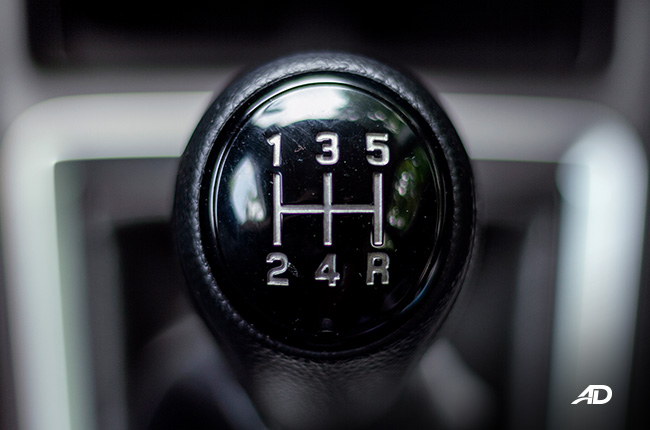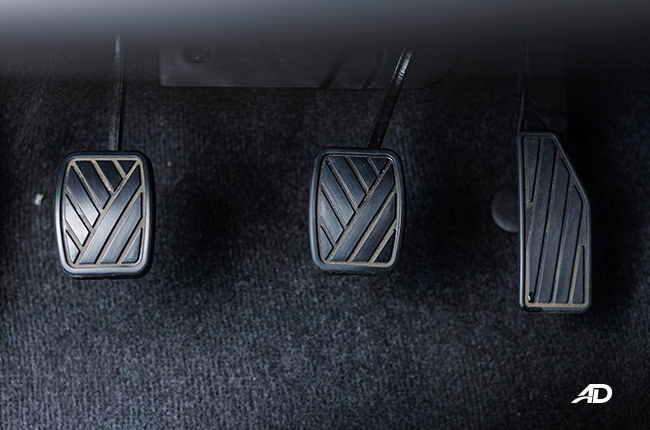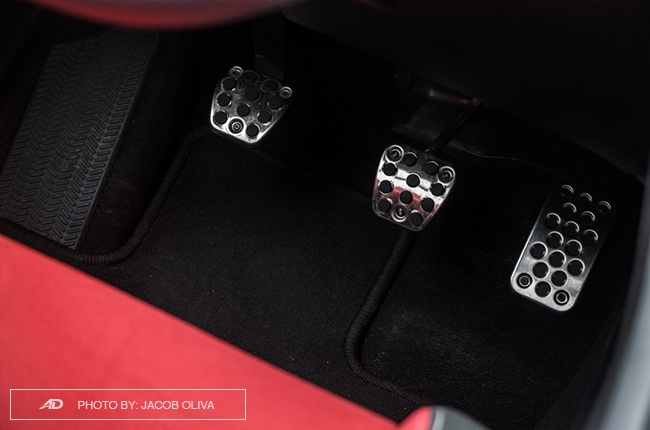
Manual transmissions come with a lot of parts but are ultimately simpler and easier to fix if something goes wrong, and one of the key wear components of the transmission is the clutch. Whether it’s cable-actuated or hydraulic, identifying a worn clutch is the same either way and a part of general vehicle maintenance.
To identify a worn clutch, you need to know the fundamentals of how to drive a manual transmission. Also, knowing your car is also part of the battle, so being able to notice changes in performance is also a good ability to have.
Components

There are two components that wear out over time, and there is one component that connects your engine to the transmission. The two main wear components are the pressure plate and the friction plate. Whenever you replace the clutch, these two items are replaced.
Meanwhile, the harder-wearing part that connects the engine to the transmission is the flywheel. It’s the equivalent of your brake rotors in your braking system, while the friction plate is the equivalent of your brake pads. Like your brake rotors, after changing, you need to resurface your flywheel to make sure that the new plate mates well with the flywheel.
During a clutch replacement service, all three things need to be attended to. Skipping a component is not advisable. Usually, replacement kits come complete with all the parts that you need.
Clutch is slipping

When you release the clutch pedal from a stop, you may notice that the power that your engine is producing isn’t reaching your wheels. Your clutch can also grab a bit and slip as you progressively release the pedal. Your engine could bog down and even stall if your clutch is worn.
Clunky shifting and grinding gears

Once you’re at speed, clutching in and out and rowing through the gears should be effortless, but when you clutch out and the car jerks or the engine hesitates, that’s another sign that you need a replacement.
Vague clutch pedal feel

If you’re a seasoned manual driver, then you should be able to feel the clutch actuation and engagement through the clutch pedal regardless of if it is cable or hydraulic. An experienced driver should also make mental notes on where the working-level of your clutch pedal is at and should notice if the working level rises by a considerable amount.
If you feel that your clutch pedal isn’t engaging properly, or the biting point is not as pronounced as before, then it could be a sign that your clutch is in need of a service. Other than that, you could also chalk it up to your clutch master and clutch slave cylinder being faulty or a combination of multiple components.
Heavy pedal

When your car was new, you could recall that the clutch pedal was easily actuated, but as time goes on, you can expect your clutch to get heavier over time as the pressure plate gets used and abused. If your clutch gets noticeably heavy and hard to use, then it’s one of the signs that you need a new clutch, especially the pressure plate.
Grinding gears

A worn clutch system means that your clutch system could be performing inconsistently, and failing to disengage completely even when the clutch pedal is depressed completely between gear shifts. The sound of grinding gears is undeniable and is very piercing during your drive. It will catch you off guard and it can make you wince because of the metal-to-metal contact. This can happen while you are stopped or while you are running.
Can't shift

In extreme cases, if you can't get your car into gear, then you should bring your car to a mechanic. If you can't shift, then that means your clutch is not engaging and disengaging like it should.
Latest Features
-
An all-electric future: The Porsche Macan Electric / Featured Article
Porsche’s Macan goes all-electric; it’s a new beast with an electrified heart, yet unmistakably Porsche in performance and spirit.
-
Which Kia should I buy? / Featured Article
We’re here to help you decide which Kia vehicle is best for you, whether it’s a sedan, crossover, or minivan.
-
Why Lynk & Co is a good option for luxury car buyers / Featured Article
Lynk & Co offers premium value for those exploring the luxury market.
Popular Articles
-
Electric Vehicles in the Philippines for under P1 million
Jerome Tresvalles · Aug 19, 2025
-
Top 3 Cars For Every Lifestyle—What Cars Are Right For You? | Behind a Desk
Caco Tirona · Apr 24, 2024
-
5 Tips to Maximize Fuel Efficiency
Jerome Tresvalles · Sep 09, 2024
-
Five driving habits that are draining your fuel tank
Jerome Tresvalles · Jun 24, 2025
-
Can engine braking harm your engine?
Jerome Tresvalles · Sep 11, 2025
-
Do electric cars even need maintenance?
Jerome Tresvalles · Oct 23, 2024
-
Best vehicles for an active outdoor lifestyle
Shaynah Miranda · Jul 25, 2024
-
How to drive different types of vehicle transmissions
May 23, 2024
-
5 easy ways to keep your car interior clean
Allysa Mae Zulueta · Nov 15, 2021
-
How to survive Metro Manila traffic
Earl Lee · Aug 16, 2022




